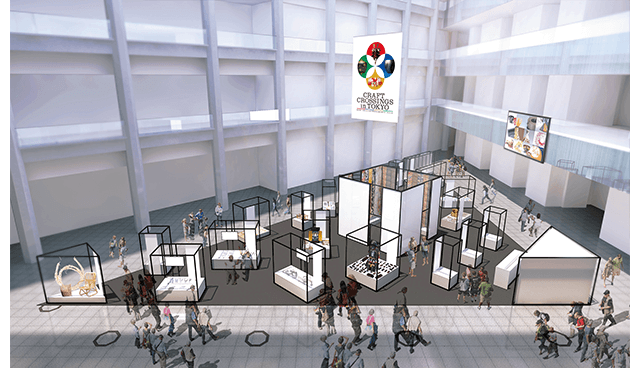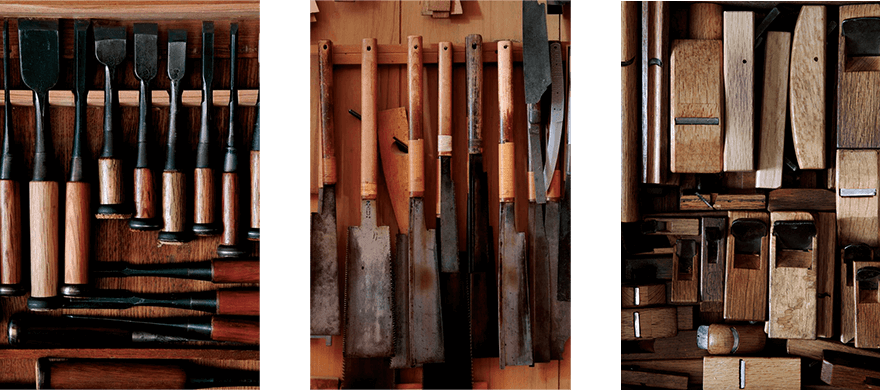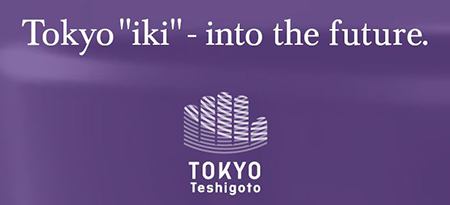The advanced technique and high quality of traditional crafts on display at KITTE.

KITTE’s first floor atrium is an expansive open space, offering a sense of space in spite of the plentiful framework furniture. This space is perfect for an interesting exhibition.
Experience Zone: Traditional crafts worthy of aweTraditional crafts are made of a variety of components: raw materials, tools, processes, colors, patterns, shapes, and more. An Edo rattan blind is made of natural materials, but among available materials bamboo is sturdy, firm, has a good luster, and is harvested between the fall and spring equinoxes. Through cutting, shaving, striking and carving, Edo era joinery could build structures without the use of nails. Even so, millions of saws, chisels and planes were utilized for the creation of all such joinery. From the manufacturing know-how accumulated over the ages, to traditional techniques and skills, various components are used to make a single traditional craft. The Experience Zone is an exhibition focusing on the world of manufacturing such traditional crafts. The amazing fastidiousness of the artisans is sure to yield cries of wonder from those attending.

An image of the Edo joinery exhibition, displaying chisels, planes and saws in active use. Each of these tools have been handled with care, and are beautiful to behold.
Future Zone: The potential of traditional craftsThe advanced techniques of traditional crafts have begun to be useful in various high-technology applications. Behind the scenes at mode collections released from the forefront of fashion, makeup artists love to use traditional craft brushes. The traditional craft kumihimo braids are used as wearable life sensors, and have been adopted as IoT devices to detect pulses. While not a new idea, discovering new techniques from tradition gives birth to techniques and raw materials only Japan can provide. The Future Zone is an exhibition that explores the future possibilities of traditional crafts, offering high hopes for the next traditional craft technology to be adopted.
Science Zone: Analyzing techniques with technologyThe Science Zone uses the power of science to explain the astonishing abilities of artisans. Tokyo silverware is cast one piece at a time, and artisans can judge their quality by sound. Skilled artisans act like a sensor for Edo brushes, discerning the bad strands from countless tufts and pulling them out. The challenge is using science to visualize the instinct and know-how of these artisans. With Edo embroidery, artisans weave multicolored thread one piece at a time to craft what is basically a miniature picture. In this exhibition, the works will be magnified to show how exact and correctly the thread is threaded. It remains to be seen just how much science can analyze the skills of these artisans.


The instinct and know-how in artisan skills are cultivated through experience and passed down generations. This exhibition will use the power of science to visualize this process.
Prefectural PR areas are set up on the B1 floor of Tokyo City Ai
A PR area has been set up where prefectures will display posters and play introduction video clips, so before visiting the venues of this event, come check the characteristics of prefectures here. Knowing these characteristics is sure to deepen your enjoyment of the world of traditional crafts. There is also an information area for this event, so come here for information if you lose your way to the venue. There are also multilingual guide maps. Sightseeing information and gourmet information are also distributed for tourists.
*Items on display and exhibition details are subject to future changes.
*All pictures are concept images.
*Map design & illustration by Workshop Jin, Inc.







